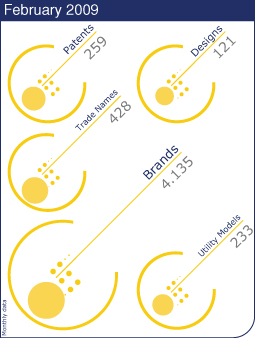The new Treaty on Trademark Rights is now in force
The Diplomatic Conference held on March 28, 2006 in the city of Singapore adopted a new Treaty on trademark rights, called the Treaty of Singapore. Spain, through its United Nations representative, has ratified the Treaty.
The Treaty itself establishes that it will come into force three months from the time of the tenth ratification document, which was that of Australia, included in the World Organization of Intellectual Property on December 15, 2008. That being the case, as of March 16 of this year, the Singapore Treaty has been in force. Spain was the eleventh State to ratify.
The objective of the Treaty is to deploy a proper trademark defense at the global level. This being the aim, the Trademark Law Treaty was drawn up (abbreviated by its initials TLT), signed in Geneva on October 27, 1994 and ratified by Spain as Public Document on November 13, 1998. The Treaty unified formal and procedural requirements necessary for registering trademarks in all signatory States, which currently total 36. The new Treaty introduces reforms with regards to the former one.
The most significant additions to the new Singapore Treaty are highlighted as follows:
- It's explicitly recognized that trademarks are no longer limited to bi-dimensional product categories. The Norm expressly mentions new types of trademarks, such as holograms, animated trademarks, color trademarks and others that consist of non-visible images, such as sound and taste trademarks.
- In terms of communications that correspond to the various procedures related to registering trademarks, the Singapore Treaty gives complete liberty to the office for selecting their format (in paper or electronic format), as well as their concession (physical means, such as standard mail and messenger services, or electronic means such as fax or electronic mail).
- Another addition to the Treaty involves that of regulating the registration of licenses, as well as their modification and cancellation since, despite the fact that the possibility of registration is envisaged by more than 100 WIPO member states, it wasn't contemplated in the TLT of 1994.
- Lastly, it should be pointed out Spain has formulated a right, by virtue of article 29.4 of the Treaty, to 19.2 of the same, according to which the registration of a license could not be demanded as a condition for a licensee to possess the right. As for the rest, the Treaty is entirely in accordance with Spanish legislation and does not require legislative measures for carrying it out.
The General Director of the OMPI, Francis Gurry, has stated that the application of the Singapore Treaty offers excellent perspectives to trademark holders around the world, since it allows the trademark product industry to obtain trademark registrations and efficiently administer their corresponding rights according to costs. The General Director pointed out that it¹s an ³extremely positive event for companies which are trying to achieve savings while maintaining their position in the market during such turbulent economic circumstances faced today.

